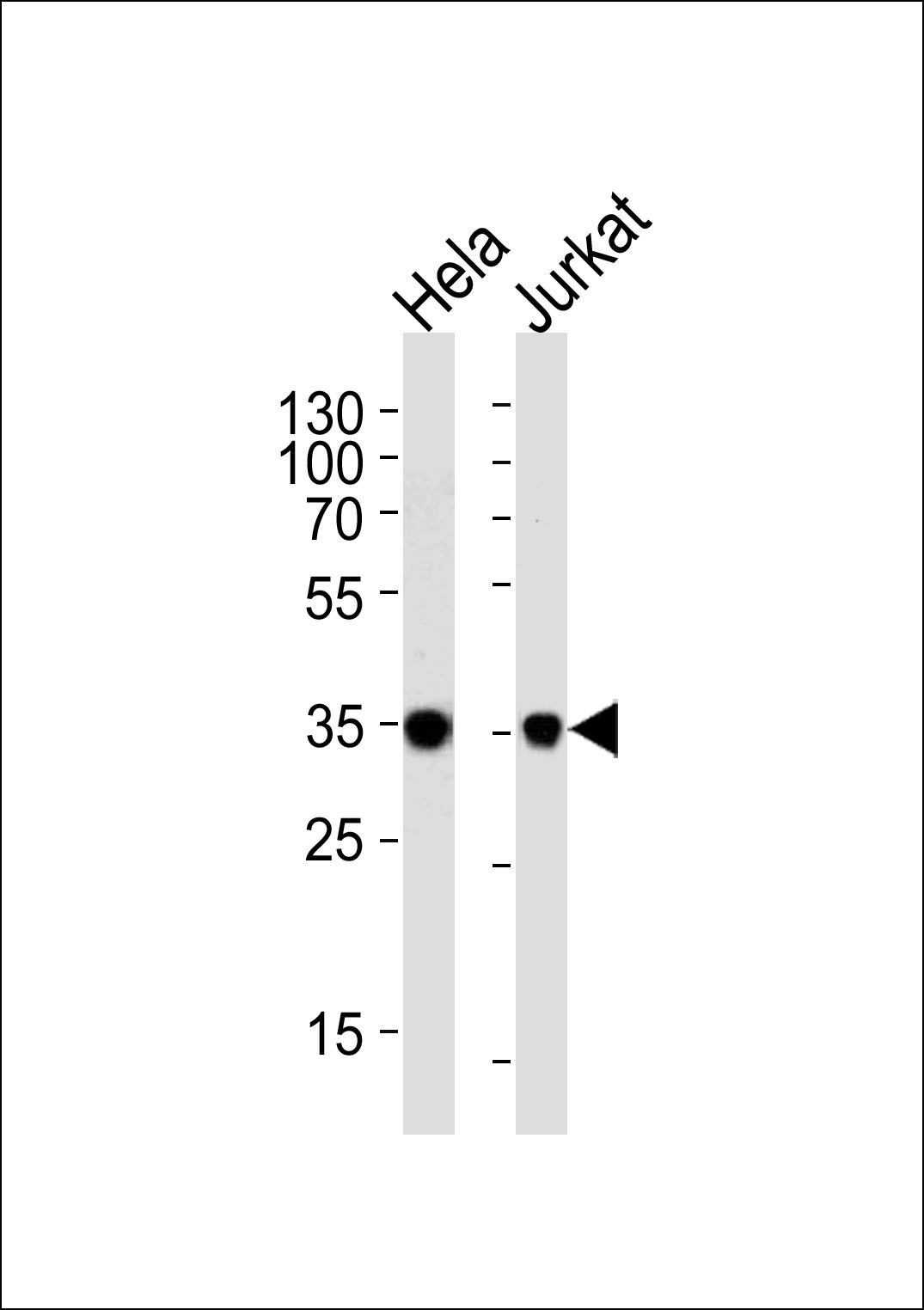FRG1 Antibody (C-term)
Affinity Purified Rabbit Polyclonal Antibody (Pab)
- SPECIFICATION
- CITATIONS
- PROTOCOLS
- BACKGROUND

Application
| WB, E |
|---|---|
| Primary Accession | Q14331 |
| Other Accession | P97376, NP_004468.1 |
| Reactivity | Human |
| Predicted | Mouse |
| Host | Rabbit |
| Clonality | Polyclonal |
| Isotype | Rabbit IgG |
| Calculated MW | 29172 Da |
| Antigen Region | 230-256 aa |
| Gene ID | 2483 |
|---|---|
| Other Names | Protein FRG1, FSHD region gene 1 protein, FRG1 |
| Target/Specificity | This FRG1 antibody is generated from rabbits immunized with a KLH conjugated synthetic peptide between 230-256 amino acids from the C-terminal region of human FRG1. |
| Dilution | WB~~1:1000 |
| Format | Purified polyclonal antibody supplied in PBS with 0.09% (W/V) sodium azide. This antibody is purified through a protein A column, followed by peptide affinity purification. |
| Storage | Maintain refrigerated at 2-8°C for up to 2 weeks. For long term storage store at -20°C in small aliquots to prevent freeze-thaw cycles. |
| Precautions | FRG1 Antibody (C-term) is for research use only and not for use in diagnostic or therapeutic procedures. |
| Name | FRG1 (HGNC:3954) |
|---|---|
| Function | Binds to mRNA in a sequence-independent manner. May play a role in regulation of pre-mRNA splicing or in the assembly of rRNA into ribosomal subunits. May be involved in mRNA transport. May be involved in epigenetic regulation of muscle differentiation through regulation of activity of the histone-lysine N-methyltransferase KMT5B. |
| Cellular Location | Nucleus, Cajal body. Nucleus, nucleolus. Cytoplasm. Cytoplasm, myofibril, sarcomere, Z line. Note=Localization changes during myogenesis from mainly cytoplasmic in undifferentiated myoblasts, to strongly nucleolar in early myotubes and back to cytoplasmic 5 days post-differentiation (PubMed:20970242). Localized at the Z-line in the sarcomere of matured myotubes 8 days post-differentiation (PubMed:20970242). |
| Tissue Location | Expressed in adult muscle, lymphocytes, fetal brain, muscle, and placenta. Also expressed in the smooth muscle of arteries and veins, the sweat glands and the epidermis |

Thousands of laboratories across the world have published research that depended on the performance of antibodies from Abcepta to advance their research. Check out links to articles that cite our products in major peer-reviewed journals, organized by research category.
info@abcepta.com, and receive a free "I Love Antibodies" mug.
Provided below are standard protocols that you may find useful for product applications.
Background
This gene maps to a location 100 kb centromeric of the repeat units on chromosome 4q35 which are deleted in facioscapulohumeral muscular dystrophy (FSHD). It is evolutionarily conserved and has related sequences on multiple human chromosomes but DNA sequence analysis did not reveal any homology to known genes. In vivo studies demonstrate the encoded protein is localized to the nucleolus.
References
Hanel, M.L., et al. Dev. Dyn. 238(6):1502-1512(2009)
Bodega, B., et al. BMC Biol. 7, 41 (2009) :
Pirozhkova, I., et al. PLoS ONE 3 (10), E3389 (2008) :
Lamesch, P., et al. Genomics 89(3):307-315(2007)
Gabellini, D., et al. Nature 439(7079):973-977(2006)
If you have used an Abcepta product and would like to share how it has performed, please click on the "Submit Review" button and provide the requested information. Our staff will examine and post your review and contact you if needed.
If you have any additional inquiries please email technical services at tech@abcepta.com.














 Foundational characteristics of cancer include proliferation, angiogenesis, migration, evasion of apoptosis, and cellular immortality. Find key markers for these cellular processes and antibodies to detect them.
Foundational characteristics of cancer include proliferation, angiogenesis, migration, evasion of apoptosis, and cellular immortality. Find key markers for these cellular processes and antibodies to detect them. The SUMOplot™ Analysis Program predicts and scores sumoylation sites in your protein. SUMOylation is a post-translational modification involved in various cellular processes, such as nuclear-cytosolic transport, transcriptional regulation, apoptosis, protein stability, response to stress, and progression through the cell cycle.
The SUMOplot™ Analysis Program predicts and scores sumoylation sites in your protein. SUMOylation is a post-translational modification involved in various cellular processes, such as nuclear-cytosolic transport, transcriptional regulation, apoptosis, protein stability, response to stress, and progression through the cell cycle. The Autophagy Receptor Motif Plotter predicts and scores autophagy receptor binding sites in your protein. Identifying proteins connected to this pathway is critical to understanding the role of autophagy in physiological as well as pathological processes such as development, differentiation, neurodegenerative diseases, stress, infection, and cancer.
The Autophagy Receptor Motif Plotter predicts and scores autophagy receptor binding sites in your protein. Identifying proteins connected to this pathway is critical to understanding the role of autophagy in physiological as well as pathological processes such as development, differentiation, neurodegenerative diseases, stress, infection, and cancer.


